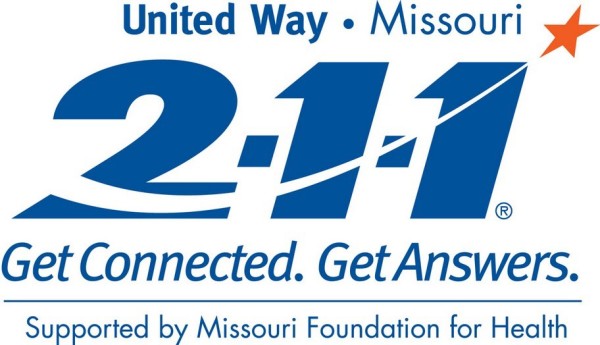FLOURISH St Louis has identified that navigating health resources can be confusing for families, and created the Health Communication and Navigation Action Team to help more moms access the resources they need for a healthy pregnancy and baby. Now, we are looking to community partners, like the United Way 2-1-1 Navigation Center, to help us understand the areas of greatest need and to connect families to support services.
In November, United Way of Greater St. Louis will celebrate 10 years of supporting residents with an active 2-1-1 helpline, connecting 99 counties in Missouri and nine in southwest Illinois to resources and services for a number of needs, including housing, disaster assistance, food and job support.
2-1-1 is more than an informational phone service. Trained specialists answer every call to identify short- and long-term needs and find local agencies and programs who can help. Individuals seeking resources and support can also visit 211helps.org to get connected to organizations that can assist in everything from food pantries and shelters to education and behavioral health care.
“I always like to say 2-1-1 is the Google of social services,” said Regina Greer, Vice President of Community Response, United Way of Greater St. Louis. “We offer over 24,000 individual services in our database spanning across 3,000 unique programs, and we consistently maintain our database to ensure the information we have is accurate and reliable.”
Beyond assisting an individual or family with immediate needs, United Way 2-1-1 Navigation Specialists are trained to open up a conversation with callers about why he or she is struggling. For example, an individual or family living in an area at highest risk for infant mortality is often facing many challenges simultaneously: unreliable transportation, low-wage jobs and unstable housing all impact a family’s ability to raise a healthy infant. 2-1-1 specialists seek to understand the full range of factors impacting the family, so they can find the right resources to help them address those larger challenges.
2-1-1 gathers data on the service requests they receive, which helps organizations like FLOURISH focus their efforts in the areas that most need assistance. Data includes insights into how many requests are made for each area of service, such as pregnancy, maternal health or infant health. 2-1-1 also can sort data by legislative region or zip code, helping community aid organizations and lawmakers better understand the biggest concerns facing their local area.
“FLOURISH St. Louis will be able to take advantage of the data 2-1-1 is already gathering, so we can better understand what the needs and gaps are for St. Louis moms and babies. This sharing of data will also help us focus our community and legislative efforts toward those directly affected,” said Jill Thompson, Director of Strategic Initiatives at Generate Health, the backbone organization for FLOURISH.
As Action Teams, like Healthcare Communication and Navigation, begin to fine-tune their plans, resources like 2-1-1 will help them not only implement their strategies, but also provide insights into how to adjust FLOURISH’s long-term plans to make a measurable impact on infant mortality rates in St. Louis.
If you are interested in helping to connect more families to health resources, visit our Health Communication and Navigation Action Team page to share your ideas or join our efforts.

